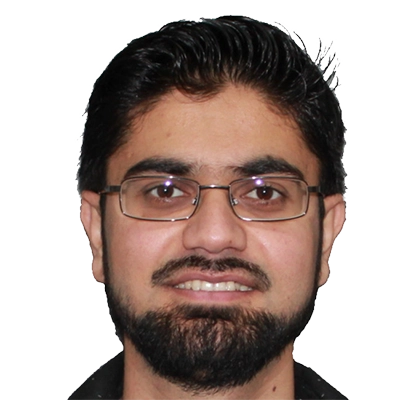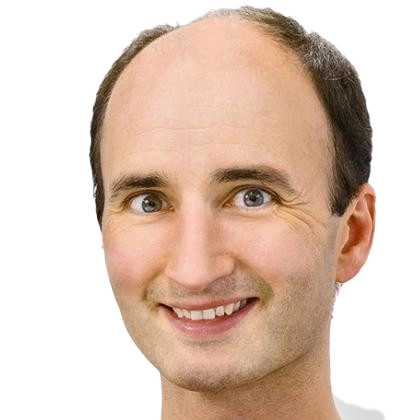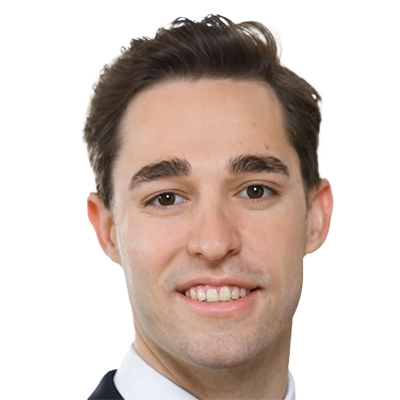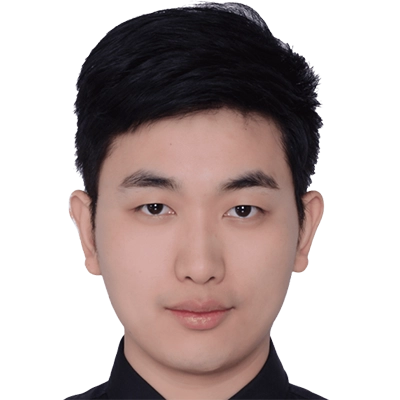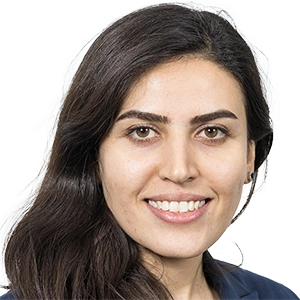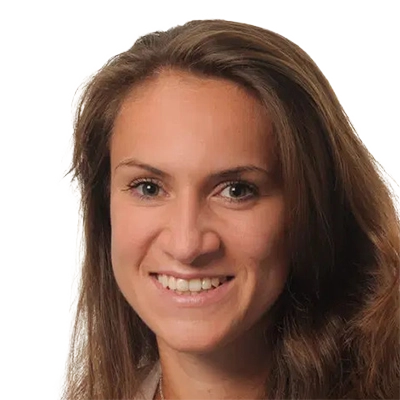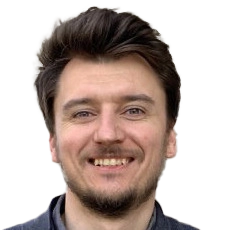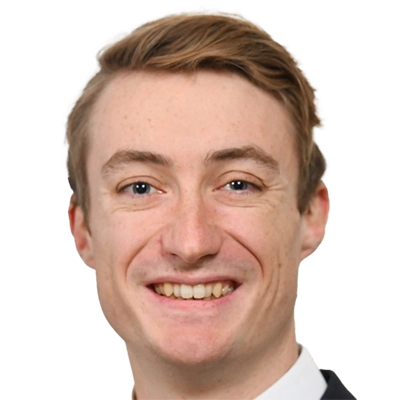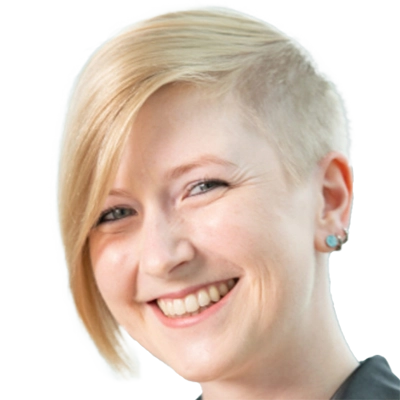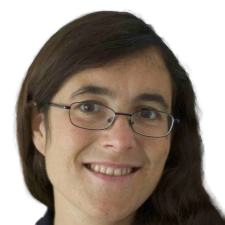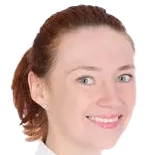
MCML researchers with 32 papers in highly-ranked Journals
We are happy to announce that MCML researchers are represented in 2023 with 32 papers in highly-ranked Journals:
Semi-Structured Distributional Regression.
American Statistician (Feb. 2023). DOI.
Abstract
Combining additive models and neural networks allows to broaden the scope of statistical regression and extends deep learning-based approaches by interpretable structured additive predictors at the same time. Existing approaches uniting the two modeling approaches are, however, limited to very specific combinations and, more importantly, involve an identifiability issue. As a consequence, interpretability and stable estimation is typically lost. We propose a general framework to combine structured regression models and deep neural networks into a unifying network architecture. To overcome the inherent identifiability issues between different model parts, we construct an orthogonalization cell that projects the deep neural network into the orthogonal complement of the statistical model predictor. This enables proper estimation of structured model parts and thereby interpretability. We demonstrate the framework’s efficacy in numerical experiments and illustrate its special merits in benchmarks and real-world applications.
MCML Authors
Learning vision based autonomous lateral vehicle control without supervision.
Applied Intelligence 53 (Mar. 2023). DOI. GitHub.
Abstract
Supervised deep learning methods using image data as input have shown promising results in the context of vehicle control. However, these supervised methods have two main disadvantages: 1) They require a copious amount of labeled training data, which is difficult and expensive to collect. 2) Such models do not perform well, when situations that are not in the distribution of the training set are encountered. This includes deviations from the designated driving behavior. We therefore provide a framework to mitigate these problems from merely an unlabeled sequence of images. Visual Odometry is first used to determine the vehicle trajectory. Model Predictive Control (MPC) then uses this trajectory to implicitly infer the steering labels. Meanwhile, synthesized images at deviated trajectories are included in the training distribution for enhanced robustness of the neural network model. Experimental results demonstrate that the performance of our network is at par with methods requiring additional data collection or supervision.
MCML Authors
New Threats to Society from Free-Speech Social Media Platforms.
Communications of the ACM 66.10 (Sep. 2023). DOI.
Abstract
Understanding emerging threats from social media platforms.
MCML Authors
Model-agnostic feature importance and effects with dependent features: a conditional subgroup approach.
Data Mining and Knowledge Discovery (Jan. 2023). DOI.
Abstract
The interpretation of feature importance in machine learning models is challenging when features are dependent. Permutation feature importance (PFI) ignores such dependencies, which can cause misleading interpretations due to extrapolation. A possible remedy is more advanced conditional PFI approaches that enable the assessment of feature importance conditional on all other features. Due to this shift in perspective and in order to enable correct interpretations, it is beneficial if the conditioning is transparent and comprehensible. In this paper, we propose a new sampling mechanism for the conditional distribution based on permutations in conditional subgroups. As these subgroups are constructed using tree-based methods such as transformation trees, the conditioning becomes inherently interpretable. This not only provides a simple and effective estimator of conditional PFI, but also local PFI estimates within the subgroups. In addition, we apply the conditional subgroups approach to partial dependence plots, a popular method for describing feature effects that can also suffer from extrapolation when features are dependent and interactions are present in the model. In simulations and a real-world application, we demonstrate the advantages of the conditional subgroup approach over existing methods: It allows to compute conditional PFI that is more true to the data than existing proposals and enables a fine-grained interpretation of feature effects and importance within the conditional subgroups.
MCML Authors
Leveraging large language models to monitor climate technology innovation.
Environmental Research Letters 18.9 (Sep. 2023). DOI.
Abstract
To achieve net-zero emissions, public policy needs to foster rapid innovation of climate technologies. However, there is a scarcity of comprehensive and up-to-date evidence to guide policymaking by monitoring climate innovation systems. This is notable, especially at the center of the innovation process, where nascent inventions transition into profitable and scalable market solutions. Here, we discuss the potential of large language models (LLMs) to monitor climate technology innovation. By analyzing large pools of unstructured text data sources, such as company reports and social media, LLMs can automate information retrieval processes and thereby improve existing monitoring in terms of cost-effectiveness, timeliness, and comprehensiveness. In this perspective, we show how LLMs can play a crucial role in informing innovation policy for the energy transition by highlighting promising use cases and prevailing challenges for research and policy.
MCML Authors
Smooth and accurate predictions of joint contact force timeseries in gait using overparameterised deep neural networks.
Frontiers in Bioengineering and Biotechnology 11 (Jul. 2023). DOI.
Abstract
Alterations in joint contact forces (JCFs) are thought to be important mechanisms for the onset and progression of many musculoskeletal and orthopaedic pain disorders. Computational approaches to JCFs assessment represent the only non-invasive means of estimating in-vivo forces; but this cannot be undertaken in free-living environments. Here, we used deep neural networks to train models to predict JCFs, using only joint angles as predictors. Our neural network models were generally able to predict JCFs with errors within published minimal detectable change values. The errors ranged from the lowest value of 0.03 bodyweight (BW) (ankle medial-lateral JCF in walking) to a maximum of 0.65BW (knee VT JCF in running). Interestingly, we also found that over parametrised neural networks by training on longer epochs (>100) resulted in better and smoother waveform predictions. Our methods for predicting JCFs using only joint kinematics hold a lot of promise in allowing clinicians and coaches to continuously monitor tissue loading in free-living environments.
MCML Authors
Deep learning for the prediction of type 2 diabetes mellitus from neck-to-knee Dixon MRI in the UK biobank.
Heliyon 9.11 (Nov. 2023). DOI.
Abstract
Rationale and objectives: We evaluate the automatic identification of type 2 diabetes from neck-to-knee, two-point Dixon MRI scans with 3D convolutional neural networks on a large, population-based dataset. To this end, we assess the best combination of MRI contrasts and stations for diabetes prediction, and the benefit of integrating risk factors.
Materials and methods: Subjects with type 2 diabetes mellitus have been identified in the prospective UK Biobank Imaging study, and a matched control sample has been created to avoid confounding bias. Five-fold cross-validation is used for the evaluation. All scans from the two-point Dixon neck-to-knee sequence have been standardized. A neural network that considers multi-channel MRI input was developed and integrates clinical information in tabular format. An ensemble strategy is used to combine multi-station MRI predictions. A subset with quantitative fat measurements is identified for comparison to prior approaches.
Results: MRI scans from 3406 subjects (mean age, 66.2 years ± 7.1 [standard deviation]; 1128 women) were analyzed with 1703 diabetics. A balanced accuracy of 78.7%, AUC ROC of 0.872, and an average precision of 0.878 was obtained for the classification of diabetes. The ensemble over multiple Dixon MRI stations yields better performance than selecting the individually best station. Moreover, combining fat and water scans as multi-channel inputs to the networks improves upon just using single contrasts as input. Integrating clinical information about known risk factors of diabetes in the network boosts the performance across all stations and the ensemble. The neural network achieved superior results compared to the prediction based on quantitative MRI measurements.
Conclusions: The developed deep learning model accurately predicted type 2 diabetes from neck-to-knee two-point Dixon MRI scans.
MCML Authors
Auxiliary Cross-Modal Representation Learning With Triplet Loss Functions for Online Handwriting Recognition.
IEEE Access 11 (Aug. 2023). DOI.
Abstract
Cross-modal representation learning learns a shared embedding between two or more modalities to improve performance in a given task compared to using only one of the modalities. Cross-modal representation learning from different data types - such as images and time-series data (e.g., audio or text data) – requires a deep metric learning loss that minimizes the distance between the modality embeddings. In this paper, we propose to use the contrastive or triplet loss, which uses positive and negative identities to create sample pairs with different labels, for cross-modal representation learning between image and time-series modalities (CMR-IS). By adapting the triplet loss for cross-modal representation learning, higher accuracy in the main (time-series classification) task can be achieved by exploiting additional information of the auxiliary (image classification) task. We present a triplet loss with a dynamic margin for single label and sequence-to-sequence classification tasks. We perform extensive evaluations on synthetic image and time-series data, and on data for offline handwriting recognition (HWR) and on online HWR from sensor-enhanced pens for classifying written words. Our experiments show an improved classification accuracy, faster convergence, and better generalizability due to an improved cross-modal representation. Furthermore, the more suitable generalizability leads to a better adaptability between writers for online HWR.
MCML Authors
Robust Autonomous Vehicle Pursuit without Expert Steering Labels.
IEEE Robotics and Automation Letters 8.10 (Oct. 2023). DOI.
Abstract
In this work, we present a learning method for both lateral and longitudinal motion control of an ego-vehicle for the task of vehicle pursuit. The car being controlled does not have a pre-defined route, rather it reactively adapts to follow a target vehicle while maintaining a safety distance. To train our model, we do not rely on steering labels recorded from an expert driver, but effectively leverage a classical controller as an offline label generation tool. In addition, we account for the errors in the predicted control values, which can lead to a loss of tracking and catastrophic crashes of the controlled vehicle. To this end, we propose an effective data augmentation approach, which allows to train a network that is capable of handling different views of the target vehicle. During the pursuit, the target vehicle is firstly localized using a Convolutional Neural Network. The network takes a single RGB image along with cars’ velocities and estimates target vehicle’s pose with respect to the ego-vehicle. This information is then fed to a Multi-Layer Perceptron, which regresses the control commands for the ego-vehicle, namely throttle and steering angle. We extensively validate our approach using the CARLA simulator on a wide range of terrains. Our method demonstrates real-time performance, robustness to different scenarios including unseen trajectories and high route completion.
MCML Authors
E-NeRF: Neural Radiance Fields from a Moving Event Camera.
IEEE Robotics and Automation Letters 8.3 (Mar. 2023). DOI.
Abstract
Estimating neural radiance fields (NeRFs) from “ideal” images has been extensively studied in the computer vision community. Most approaches assume optimal illumination and slow camera motion. These assumptions are often violated in robotic applications, where images may contain motion blur, and the scene may not have suitable illumination. This can cause significant problems for downstream tasks such as navigation, inspection, or visualization of the scene. To alleviate these problems, we present E-NeRF, the first method which estimates a volumetric scene representation in the form of a NeRF from a fast-moving event camera. Our method can recover NeRFs during very fast motion and in high-dynamic-range conditions where frame-based approaches fail. We show that rendering high-quality frames is possible by only providing an event stream as input. Furthermore, by combining events and frames, we can estimate NeRFs of higher quality than state-of-the-art approaches under severe motion blur. We also show that combining events and frames can overcome failure cases of NeRF estimation in scenarios where only a few input views are available without requiring additional regularization.
MCML Authors
Incremental Dense Reconstruction from Monocular Video with Guided Sparse Feature Volume Fusion.
IEEE Robotics and Automation Letters 8.6 (Jun. 2023). DOI.
Abstract
Incrementally recovering 3D dense structures from monocular videos is of paramount importance since it enables various robotics and AR applications. Feature volumes have recently been shown to enable efficient and accurate incremental dense reconstruction without the need to first estimate depth, but they are not able to achieve as high of a resolution as depth-based methods due to the large memory consumption of high-resolution feature volumes. This letter proposes a real-time feature volume-based dense reconstruction method that predicts TSDF (Truncated Signed Distance Function) values from a novel sparsified deep feature volume, which is able to achieve higher resolutions than previous feature volume-based methods, and is favorable in outdoor large-scale scenarios where the majority of voxels are empty. An uncertainty-aware multi-view stereo (MVS) network is leveraged to infer initial voxel locations of the physical surface in a sparse feature volume. Then for refining the recovered 3D geometry, deep features are attentively aggregated from multi-view images at potential surface locations, and temporally fused. Besides achieving higher resolutions than before, our method is shown to produce more complete reconstructions with finer detail in many cases. Extensive evaluations on both public and self-collected datasets demonstrate a very competitive real-time reconstruction result for our method compared to state-of-the-art reconstruction methods in both indoor and outdoor settings.
MCML Authors
Deep Learning for Subtle Volcanic Deformation Detection With InSAR Data in Central Volcanic Zone.
IEEE Transactions on Geoscience and Remote Sensing 61 (Oct. 2023). DOI.
Abstract
Subtle volcanic deformations point to volcanic activities, and monitoring them helps predict eruptions. Today, it is possible to remotely detect volcanic deformation in mm/year scale thanks to advances in interferometric synthetic aperture radar (InSAR). This article proposes a framework based on a deep learning model to automatically discriminate subtle volcanic deformations from other deformation types in five-year-long InSAR stacks. Models are trained on a synthetic training set. To better understand and improve the models, explainable artificial intelligence (AI) analyses are performed. In initial models, Gradient-weighted Class Activation Mapping (Grad-CAM) linked new-found patterns of slope processes and salt lake deformations to false-positive detections. The models are then improved by fine-tuning (FT) with a hybrid synthetic-real data, and additional performance is extracted by low-pass spatial filtering (LSF) of the real test set. The t-distributed stochastic neighbor embedding (t-SNE) latent feature visualization confirmed the similarity and shortcomings of the FT set, highlighting the problem of elevation components in residual tropospheric noise. After fine-tuning, all the volcanic deformations are detected, including the smallest one, Lazufre, deforming 5 mm/year. The first time confirmed deformation of Cerro El Condor is observed, deforming 9.9–17.5 mm/year. Finally, sensitivity analysis uncovered the model’s minimal detectable deformation of 2 mm/year.
MCML Authors
HTC-DC Net: Monocular Height Estimation From Single Remote Sensing Images.
IEEE Transactions on Geoscience and Remote Sensing 61 (Oct. 2023). DOI. GitHub.
Abstract
Three-dimensional geoinformation is of great significance for understanding the living environment; however, 3-D perception from remote sensing data, especially on a large scale, is restricted, mainly due to the high costs of 3-D sensors such as light detection and ranging (LiDAR). To tackle this problem, we propose a method for monocular height estimation from optical imagery, which is currently one of the richest sources of remote sensing data. As an ill-posed problem, monocular height estimation requires well-designed networks for enhanced representations to improve the performance. Moreover, the distribution of height values is long-tailed with the low-height pixels, e.g., the background (BG), as the head, and thus, trained networks are usually biased and tend to underestimate building heights. To solve the problems, instead of formalizing the problem as a regression task, we propose HTC-DC Net following the classification–regression paradigm, with the head-tail cut (HTC) and the distribution-based constraints (DCs) as the main contributions. HTC-DC Net is composed of the backbone network as the feature extractor, the HTC-AdaBins module, and the hybrid regression process. The HTC-AdaBins module serves as the classification phase to determine bins adaptive to each input image. It is equipped with a vision transformer (ViT) encoder to incorporate local context with holistic information and involves an HTC to address the long-tailed problem in monocular height estimation for balancing the performances of foreground (FG) and BG pixels. The hybrid regression process does the regression via the smoothing of bins from the classification phase, which is trained via DCs. The proposed network is tested on three datasets of different resolutions, namely ISPRS Vaihingen (0.09 m), Data Fusion Contest 19 (DFC19) (1.3 m), and Global Building Height (GBH) (3 m). The experimental results show the superiority of the proposed network over existing methods by large margins. Extensive ablation studies demonstrate the effectiveness of each design component.
MCML Authors
Adaptive Morphology Filter: A Lightweight Module for Deep Hyperspectral Image Classification.
IEEE Transactions on Geoscience and Remote Sensing 61 (Oct. 2023). DOI. GitHub.
Abstract
Deep neural network models significantly outperform classical algorithms in the hyperspectral image (HSI) classification task. These deep models improve generalization but incur significant computational demands. This article endeavors to alleviate the computational distress in a depthwise manner through the use of morphological operations. We propose the adaptive morphology filter (AMF) to effectively extract spatial features like the conventional depthwise convolution layer. Furthermore, we reparameterize AMF into its equivalent form, i.e., a traditional binary morphology filter, which drastically reduces the number of parameters in the inference phase. Finally, we stack multiple AMFs to achieve a large receptive field and construct a lightweight AMNet for classifying HSIs. It is noteworthy that we prove the deep stack of depthwise AMFs to be equivalent to structural element decomposition. We test our model on five benchmark datasets. Experiments show that our approach outperforms state-of-the-art methods with fewer parameters (≈10k).
MCML Authors
Multimodal and Multiresolution Data Fusion for High-Resolution Cloud Removal: A Novel Baseline and Benchmark.
IEEE Transactions on Geoscience and Remote Sensing 62 (Dec. 2023). DOI. GitHub.
Abstract
Cloud removal (CR) is a significant and challenging problem in remote sensing, and in recent years, there have been notable advancements in this area. However, two major issues remain hindering the development of CR: the unavailability of high-resolution imagery for existing datasets and the absence of evaluation regarding the semantic meaningfulness of the generated structures. In this article, we introduce M3R-CR, a benchmark dataset for high-resolution CR with multimodal and multiresolution data fusion. M3R-CR is the first public dataset for CR to feature globally sampled high-resolution optical observations, paired with radar measurements and pixel-level land-cover annotations. With this dataset, we consider the problem of CR in high-resolution optical remote-sensing imagery by integrating multimodal and multiresolution information. In this context, we have to take into account the alignment errors caused by the multiresolution nature, along with the more pronounced misalignment issues in high-resolution images due to inherent imaging mechanism differences and other factors. Existing multimodal data fusion-based methods, which assume the image pairs are aligned accurately at the pixel level, are thus not appropriate for this problem. To this end, we design a new baseline named Align-CR to perform the low-resolution synthetic aperture radar (SAR) image-guided high-resolution optical image CR. It gradually warps and fuses the features of the multimodal and multiresolution data during the reconstruction process, effectively mitigating concerns associated with misalignment. In the experiments, we evaluate the performance of CR by analyzing the quality of visually pleasing textures using image reconstruction (IR) metrics and further analyze the generation of semantically meaningful structures using a well-established semantic segmentation task. The proposed Align-CR method is superior to other baseline methods in both areas.
MCML Authors
Limitations of Deep Learning for Inverse Problems on Digital Hardware.
IEEE Transactions on Information Theory 69.12 (Dec. 2023). DOI.
Abstract
Deep neural networks have seen tremendous success over the last years. Since the training is performed on digital hardware, in this paper, we analyze what actually can be computed on current hardware platforms modeled as Turing machines, which would lead to inherent restrictions of deep learning. For this, we focus on the class of inverse problems, which, in particular, encompasses any task to reconstruct data from measurements. We prove that finite-dimensional inverse problems are not Banach-Mazur computable for small relaxation parameters. Even more, our results introduce a lower bound on the accuracy that can be obtained algorithmically.
MCML Authors
Self-supervised Learning and Self-labeling Framework for Glaucoma Detection.
Investigative Ophthalmology and Visual Science 64.8 (Jun. 2023). URL.
Abstract
Purpose: Self-supervised learning methods have made a significant impact in recent years on different domains, such as natural language processing and computer vision. Here, we develop a new self-supervised framework for simultaneous retina image clustering and self-supervised representation learning to enhance the diagnosis of glaucoma.
Methods: The network is optimized using both a contrastive self-supervised network and a clustering network that clustering helps to improve the embedding representation. Our method comprises two parallel deep networks; 1) a representation network which is a self-supervised contrastive representation network that takes two augmented views of the retina image, and 2) an image clustering or self-labeling network that takes original retina images. The representation network first projects the augmented views onto an embedding space. Then it processes these representations in a multi-layer perceptron head, which generates the baseline for the pair-wise contrastive objective. On the other hand, the clustering network performs KL divergence on the top embedding layer of the representation network.
Results: We train our framework for simultaneous representation learning and self-labeling using a clustering network. We follow standard protocols by self-supervised learning for empirical analysis and evaluate the learned representation of our model by classification (Table 1), as well as image clustering tasks (Table 2) on two different Glaucoma datasets. According to the result shown in Table 1, our method improves the results of Glaucoma classification by up to 14%, better compared to SOTA self-supervised algorithm in terms of F1 score and 2% better for the task of clustering. Glaucoma-1 is composed of the labeled subset of the human retinal images used in [1]. This dataset contains 2,397 images in total, with 956 glaucoma diagnoses. While the training set for Glaucoma-2 [2] was released by the REFUGE-2 challenge.
Conclusions: We showed that combining self-supervised representation learning along with self-labeling improves the learned representation compared to the existing self-supervised learning models on retina-based glaucoma detection by up to 14% better. Moreover, our method outperformed other self-supervised methods for image clustering tasks.
MCML Authors
A comprehensive machine learning benchmark study for radiomics-based survival analysis of CT imaging data in patients with hepatic metastases of CRC.
Investigative Radiology 58.12 (Dec. 2023). DOI.
Abstract
Optimizing a machine learning (ML) pipeline for radiomics analysis involves numerous choices in data set composition, preprocessing, and model selection. Objective identification of the optimal setup is complicated by correlated features, interdependency structures, and a multitude of available ML algorithms. Therefore, we present a radiomics-based benchmarking framework to optimize a comprehensive ML pipeline for the prediction of overall survival. This study is conducted on an image set of patients with hepatic metastases of colorectal cancer, for which radiomics features of the whole liver and of metastases from computed tomography images were calculated. A mixed model approach was used to find the optimal pipeline configuration and to identify the added prognostic value of radiomics features.
MCML Authors
Towards Green Automated Machine Learning: Status Quo and Future Directions.
Journal of Artificial Intelligence Research 77 (Jun. 2023). DOI.
Abstract
Automated machine learning (AutoML) strives for the automatic configuration of machine learning algorithms and their composition into an overall (software) solution — a machine learning pipeline — tailored to the learning task (dataset) at hand. Over the last decade, AutoML has developed into an independent research field with hundreds of contributions. At the same time, AutoML is being criticized for its high resource consumption as many approaches rely on the (costly) evaluation of many machine learning pipelines, as well as the expensive large-scale experiments across many datasets and approaches. In the spirit of recent work on Green AI, this paper proposes Green AutoML, a paradigm to make the whole AutoML process more environmentally friendly. Therefore, we first elaborate on how to quantify the environmental footprint of an AutoML tool. Afterward, different strategies on how to design and benchmark an AutoML tool w.r.t. their “greenness”, i.e., sustainability, are summarized. Finally, we elaborate on how to be transparent about the environmental footprint and what kind of research incentives could direct the community in a more sustainable AutoML research direction. As part of this, we propose a sustainability checklist to be attached to every AutoML paper featuring all core aspects of Green AutoML.
MCML Authors
Automatic variable selection algorithms in prognostic factor research in neck pain.
Journal of Clinical Medicine (Sep. 2023). DOI.
Abstract
This study aims to compare the variable selection strategies of different machine learning (ML) and statistical algorithms in the prognosis of neck pain (NP) recovery. A total of 3001 participants with NP were included. Three dichotomous outcomes of an improvement in NP, arm pain (AP), and disability at 3 months follow-up were used. Twenty-five variables (twenty-eight parameters) were included as predictors. There were more parameters than variables, as some categorical variables had >2 levels. Eight modelling techniques were compared: stepwise regression based on unadjusted p values (stepP), on adjusted p values (stepPAdj), on Akaike information criterion (stepAIC), best subset regression (BestSubset) least absolute shrinkage and selection operator [LASSO], Minimax concave penalty (MCP), model-based boosting (mboost), and multivariate adaptive regression splines (MuARS). The algorithm that selected the fewest predictors was stepPAdj (number of predictors, p = 4 to 8). MuARS was the algorithm with the second fewest predictors selected (p = 9 to 14). The predictor selected by all algorithms with the largest coefficient magnitude was “having undergone a neuroreflexotherapy intervention” for NP (β = from 1.987 to 2.296) and AP (β = from 2.639 to 3.554), and “Imaging findings: spinal stenosis” (β = from −1.331 to −1.763) for disability. Stepwise regression based on adjusted p-values resulted in the sparsest models, which enhanced clinical interpretability. MuARS appears to provide the optimal balance between model sparsity whilst retaining high predictive performance across outcomes. Different algorithms produced similar performances but resulted in a different number of variables selected. Rather than relying on any single algorithm, confidence in the variable selection may be increased by using multiple algorithms.
MCML Authors
Accelerated Componentwise Gradient Boosting Using Efficient Data Representation and Momentum-Based Optimization.
Journal of Computational and Graphical Statistics 32.2 (Apr. 2023). DOI.
Abstract
Componentwise boosting (CWB), also known as model-based boosting, is a variant of gradient boosting that builds on additive models as base learners to ensure interpretability. CWB is thus often used in research areas where models are employed as tools to explain relationships in data. One downside of CWB is its computational complexity in terms of memory and runtime. In this article, we propose two techniques to overcome these issues without losing the properties of CWB: feature discretization of numerical features and incorporating Nesterov momentum into functional gradient descent. As the latter can be prone to early overfitting, we also propose a hybrid approach that prevents a possibly diverging gradient descent routine while ensuring faster convergence. Our adaptions improve vanilla CWB by reducing memory consumption and speeding up the computation time per iteration (through feature discretization) while also enabling CWB learn faster and hence to require fewer iterations in total using momentum. We perform extensive benchmarks on multiple simulated and real-world datasets to demonstrate the improvements in runtime and memory consumption while maintaining state-of-the-art estimation and prediction performance.
MCML Authors
Machine Learning for Predicting Micro- and Macrovascular Complications in Individuals With Prediabetes or Diabetes: Retrospective Cohort Study.
Journal of Medical Internet Research 25 (Feb. 2023). DOI.
Abstract
Background: Micro- and macrovascular complications are a major burden for individuals with diabetes and can already arise in a prediabetic state. To allocate effective treatments and to possibly prevent these complications, identification of those at risk is essential.
Objective: This study aimed to build machine learning (ML) models that predict the risk of developing a micro- or macrovascular complication in individuals with prediabetes or diabetes.
Methods: In this study, we used electronic health records from Israel that contain information about demographics, biomarkers, medications, and disease codes; span from 2003 to 2013; and were queried to identify individuals with prediabetes or diabetes in 2008. Subsequently, we aimed to predict which of these individuals developed a micro- or macrovascular complication within the next 5 years. We included 3 microvascular complications: retinopathy, nephropathy, and neuropathy. In addition, we considered 3 macrovascular complications: peripheral vascular disease (PVD), cerebrovascular disease (CeVD), and cardiovascular disease (CVD). Complications were identified via disease codes, and, for nephropathy, the estimated glomerular filtration rate and albuminuria were considered additionally. Inclusion criteria were complete information on age and sex and on disease codes (or measurements of estimated glomerular filtration rate and albuminuria for nephropathy) until 2013 to account for patient dropout. Exclusion criteria for predicting a complication were diagnosis of this specific complication before or in 2008. In total, 105 predictors from demographics, biomarkers, medications, and disease codes were used to build the ML models. We compared 2 ML models: logistic regression and gradient-boosted decision trees (GBDTs). To explain the predictions of the GBDTs, we calculated Shapley additive explanations values.
Results: Overall, 13,904 and 4259 individuals with prediabetes and diabetes, respectively, were identified in our underlying data set. For individuals with prediabetes, the areas under the receiver operating characteristic curve for logistic regression and GBDTs were, respectively, 0.657 and 0.681 (retinopathy), 0.807 and 0.815 (nephropathy), 0.727 and 0.706 (neuropathy), 0.730 and 0.727 (PVD), 0.687 and 0.693 (CeVD), and 0.707 and 0.705 (CVD); for individuals with diabetes, the areas under the receiver operating characteristic curve were, respectively, 0.673 and 0.726 (retinopathy), 0.763 and 0.775 (nephropathy), 0.745 and 0.771 (neuropathy), 0.698 and 0.715 (PVD), 0.651 and 0.646 (CeVD), and 0.686 and 0.680 (CVD). Overall, the prediction performance is comparable for logistic regression and GBDTs. The Shapley additive explanations values showed that increased levels of blood glucose, glycated hemoglobin, and serum creatinine are risk factors for microvascular complications. Age and hypertension were associated with an elevated risk for macrovascular complications.
Conclusions: Our ML models allow for an identification of individuals with prediabetes or diabetes who are at increased risk of developing micro- or macrovascular complications. The prediction performance varied across complications and target populations but was in an acceptable range for most prediction tasks.
MCML Authors
Multi-armed bandits with censored consumption of resources.
Machine Learning 112.1 (Jan. 2023). DOI.
Abstract
We consider a resource-aware variant of the classical multi-armed bandit problem: In each round, the learner selects an arm and determines a resource limit. It then observes a corresponding (random) reward, provided the (random) amount of consumed resources remains below the limit. Otherwise, the observation is censored, i.e., no reward is obtained. For this problem setting, we introduce a measure of regret, which incorporates both the actual amount of consumed resources of each learning round and the optimality of realizable rewards as well as the risk of exceeding the allocated resource limit. Thus, to minimize regret, the learner needs to set a resource limit and choose an arm in such a way that the chance to realize a high reward within the predefined resource limit is high, while the resource limit itself should be kept as low as possible. We propose a UCB-inspired online learning algorithm, which we analyze theoretically in terms of its regret upper bound. In a simulation study, we show that our learning algorithm outperforms straightforward extensions of standard multi-armed bandit algorithms.
MCML Authors
Modeling intercellular communication in tissues using spatial graphs of cell.
Nature Biotechnology 41 (Mar. 2023). DOI.
Abstract
Models of intercellular communication in tissues are based on molecular profiles of dissociated cells, are limited to receptor–ligand signaling and ignore spatial proximity in situ. We present node-centric expression modeling, a method based on graph neural networks that estimates the effects of niche composition on gene expression in an unbiased manner from spatial molecular profiling data. We recover signatures of molecular processes known to underlie cell communication.
MCML Authors
Research can help to tackle AI-generated disinformation.
Nature Human Behaviour 7 (Nov. 2023). DOI.
Abstract
Generative artificial intelligence (AI) tools have made it easy to create realistic disinformation that is hard to detect by humans and may undermine public trust. Some approaches used for assessing the reliability of online information may no longer work in the AI age. We offer suggestions for how research can help to tackle the threats of AI-generated disinformation.
MCML Authors
Best practices for single-cell analysis across modalities.
Nature Reviews Genetics 24 (Mar. 2023). DOI.
Abstract
Recent advances in single-cell technologies have enabled high-throughput molecular profiling of cells across modalities and locations. Single-cell transcriptomics data can now be complemented by chromatin accessibility, surface protein expression, adaptive immune receptor repertoire profiling and spatial information. The increasing availability of single-cell data across modalities has motivated the development of novel computational methods to help analysts derive biological insights. As the field grows, it becomes increasingly difficult to navigate the vast landscape of tools and analysis steps. Here, we summarize independent benchmarking studies of unimodal and multimodal single-cell analysis across modalities to suggest comprehensive best-practice workflows for the most common analysis steps. Where independent benchmarks are not available, we review and contrast popular methods. Our article serves as an entry point for novices in the field of single-cell (multi-)omic analysis and guides advanced users to the most recent best practices.
MCML Authors
Over-optimism in unsupervised microbiome analysis: Insights from network learning and clustering.
PLOS Computational Biology 19.1 (Jan. 2023). DOI.
Abstract
In recent years, unsupervised analysis of microbiome data, such as microbial network analysis and clustering, has increased in popularity. Many new statistical and computational methods have been proposed for these tasks. This multiplicity of analysis strategies poses a challenge for researchers, who are often unsure which method(s) to use and might be tempted to try different methods on their dataset to look for the “best” ones. However, if only the best results are selectively reported, this may cause over-optimism: the “best” method is overly fitted to the specific dataset, and the results might be non-replicable on validation data. Such effects will ultimately hinder research progress. Yet so far, these topics have been given little attention in the context of unsupervised microbiome analysis. In our illustrative study, we aim to quantify over-optimism effects in this context. We model the approach of a hypothetical microbiome researcher who undertakes four unsupervised research tasks: clustering of bacterial genera, hub detection in microbial networks, differential microbial network analysis, and clustering of samples. While these tasks are unsupervised, the researcher might still have certain expectations as to what constitutes interesting results. We translate these expectations into concrete evaluation criteria that the hypothetical researcher might want to optimize. We then randomly split an exemplary dataset from the American Gut Project into discovery and validation sets multiple times. For each research task, multiple method combinations (e.g., methods for data normalization, network generation, and/or clustering) are tried on the discovery data, and the combination that yields the best result according to the evaluation criterion is chosen. While the hypothetical researcher might only report this result, we also apply the “best” method combination to the validation dataset. The results are then compared between discovery and validation data. In all four research tasks, there are notable over-optimism effects; the results on the validation data set are worse compared to the discovery data, averaged over multiple random splits into discovery/validation data. Our study thus highlights the importance of validation and replication in microbiome analysis to obtain reliable results and demonstrates that the issue of over-optimism goes beyond the context of statistical testing and fishing for significance.
MCML Authors
Collaborative nowcasting of COVID-19 hospitalization incidences in Germany.
PLOS Computational Biology 19.8 (Aug. 2023). DOI.
Abstract
Real-time surveillance is a crucial element in the response to infectious disease outbreaks. However, the interpretation of incidence data is often hampered by delays occurring at various stages of data gathering and reporting. As a result, recent values are biased downward, which obscures current trends. Statistical nowcasting techniques can be employed to correct these biases, allowing for accurate characterization of recent developments and thus enhancing situational awareness. In this paper, we present a preregistered real-time assessment of eight nowcasting approaches, applied by independent research teams to German 7-day hospitalization incidences during the COVID-19 pandemic. This indicator played an important role in the management of the outbreak in Germany and was linked to levels of non-pharmaceutical interventions via certain thresholds. Due to its definition, in which hospitalization counts are aggregated by the date of case report rather than admission, German hospitalization incidences are particularly affected by delays and can take several weeks or months to fully stabilize. For this study, all methods were applied from 22 November 2021 to 29 April 2022, with probabilistic nowcasts produced each day for the current and 28 preceding days. Nowcasts at the national, state, and age-group levels were collected in the form of quantiles in a public repository and displayed in a dashboard. Moreover, a mean and a median ensemble nowcast were generated. We find that overall, the compared methods were able to remove a large part of the biases introduced by delays. Most participating teams underestimated the importance of very long delays, though, resulting in nowcasts with a slight downward bias. The accompanying prediction intervals were also too narrow for almost all methods. Averaged over all nowcast horizons, the best performance was achieved by a model using case incidences as a covariate and taking into account longer delays than the other approaches. For the most recent days, which are often considered the most relevant in practice, a mean ensemble of the submitted nowcasts performed best. We conclude by providing some lessons learned on the definition of nowcasting targets and practical challenges.
MCML Authors
Abdominal organ segmentation via deep diffeomorphic mesh deformations.
Scientific Reports 13.1 (Oct. 2023). DOI.
Abstract
Abdominal organ segmentation from CT and MRI is an essential prerequisite for surgical planning and computer-aided navigation systems. It is challenging due to the high variability in the shape, size, and position of abdominal organs. Three-dimensional numeric representations of abdominal shapes with point-wise correspondence to a template are further important for quantitative and statistical analyses thereof. Recently, template-based surface extraction methods have shown promising advances for direct mesh reconstruction from volumetric scans. However, the generalization of these deep learning-based approaches to different organs and datasets, a crucial property for deployment in clinical environments, has not yet been assessed. We close this gap and employ template-based mesh reconstruction methods for joint liver, kidney, pancreas, and spleen segmentation. Our experiments on manually annotated CT and MRI data reveal limited generalization capabilities of previous methods to organs of different geometry and weak performance on small datasets. We alleviate these issues with a novel deep diffeomorphic mesh-deformation architecture and an improved training scheme. The resulting method, UNetFlow, generalizes well to all four organs and can be easily fine-tuned on new data. Moreover, we propose a simple registration-based post-processing that aligns voxel and mesh outputs to boost segmentation accuracy.
MCML Authors
Enhanced Digital Halftoning via Weighted Sigma-Delta Modulation.
SIAM Journal on Imaging Sciences 16.3 (Jul. 2023). DOI.
Abstract
In this paper, we study error diffusion techniques for digital halftoning from the perspective of 1-bit quantization. We introduce a method to generate schemes for two-dimensional signals as a weighted combination of their one-dimensional counterparts and show that various error diffusion schemes proposed in the literature can be represented in this framework via schemes of first order. Under the model of two-dimensional bandlimited signals, which is motivated by a mathematical model of human visual perception, we derive quantitative error bounds for such weighted schemes. We see these bounds as a step towards a mathematical understanding of the good empirical performance of error diffusion, even though they are formulated in the supremum norm, which is known to not fully capture the visual similarity of images. Motivated by the correspondence between existing error diffusion algorithms and first-order schemes, we study the performance of the analogous weighted combinations of second-order schemes and show that they exhibit a superior performance in terms of guaranteed error decay for two-dimensional bandlimited signals. In extensive numerical simulations for real-world images, we demonstrate that with some modifications to enhance stability this superior performance also translates to the problem of digital halftoning. More concretely, we find that certain second-order weighted schemes exhibit competitive performance for digital halftoning of real-world images in terms of the Feature Similarity Index (FSIM), a state-of-the-art measure for image quality assessment.
MCML Authors
Probabilistic Time Series Forecasts with Autoregressive Transformation Models.
Statistics and Computing 33.2 (Feb. 2023). URL.
MCML Authors
The Prospective COVID-19 Post-Immunization Serological Cohort in Munich (KoCo-Impf): Risk Factors and Determinants of Immune Response in Healthcare Workers.
Viruses 15.7 (Jul. 2023). DOI.
Abstract
Antibody studies analyze immune responses to SARS-CoV-2 vaccination and infection, which is crucial for selecting vaccination strategies. In the KoCo-Impf study, conducted between 16 June and 16 December 2021, 6088 participants aged 18 and above from Munich were recruited to monitor antibodies, particularly in healthcare workers (HCWs) at higher risk of infection. Roche Elecsys® Anti-SARS-CoV-2 assays on dried blood spots were used to detect prior infections (anti-Nucleocapsid antibodies) and to indicate combinations of vaccinations/infections (anti-Spike antibodies). The anti-Spike seroprevalence was 94.7%, whereas, for anti-Nucleocapsid, it was only 6.9%. HCW status and contact with SARS-CoV-2-positive individuals were identified as infection risk factors, while vaccination and current smoking were associated with reduced risk. Older age correlated with higher anti-Nucleocapsid antibody levels, while vaccination and current smoking decreased the response. Vaccination alone or combined with infection led to higher anti-Spike antibody levels. Increasing time since the second vaccination, advancing age, and current smoking reduced the anti-Spike response. The cumulative number of cases in Munich affected the anti-Spike response over time but had no impact on anti-Nucleocapsid antibody development/seropositivity. Due to the significantly higher infection risk faced by HCWs and the limited number of significant risk factors, it is suggested that all HCWs require protection regardless of individual traits.
MCML Authors
01.01.2023
Related
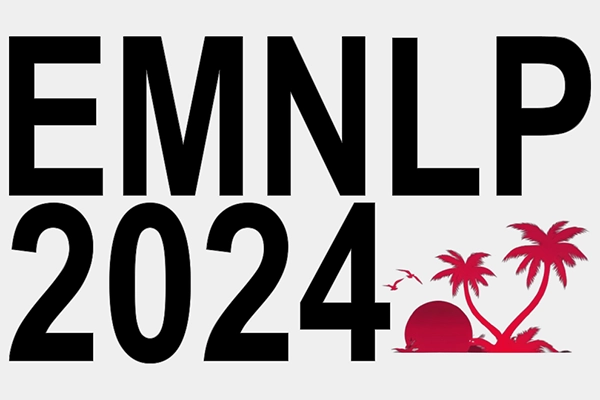
06.11.2024
MCML researchers with 20 papers at EMNLP 2024
Conference on Empirical Methods in Natural Language Processing (EMNLP 2024). Miami, FL, USA, 12.11.2024 - 16.11.2024
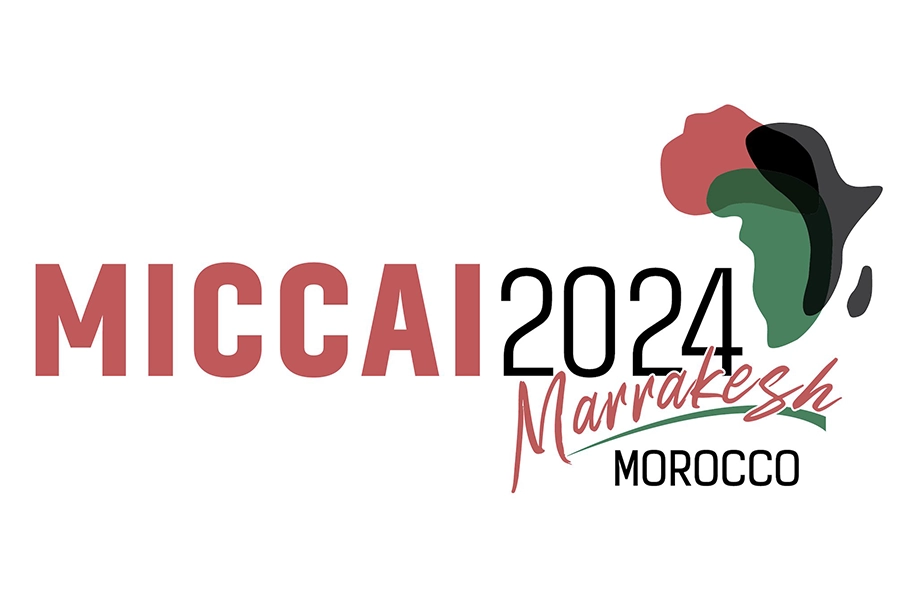
01.10.2024
MCML researchers with 16 papers at MICCAI 2024
27th International Conference on Medical Image Computing and Computer Assisted Intervention (MICCAI 2024). Marrakesh, Morocco, 06.10.2024 - 10.10.2024
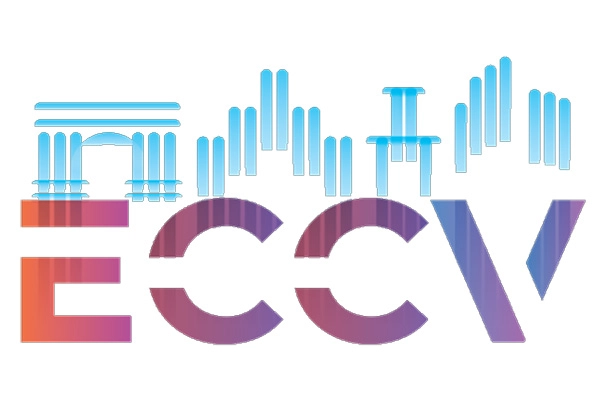
26.09.2024
MCML researchers with 18 papers at ECCV 2024
18th European Conference on Computer Vision (ECCV 2024). Milano, Italy, 29.09.2024 - 04.10.2024
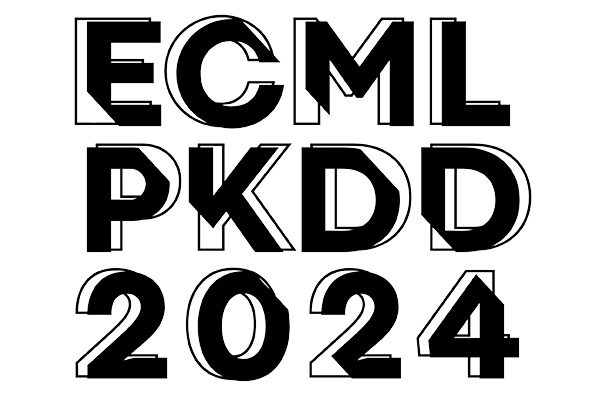
10.09.2024
MCML at ECML-PKDD 2024
We are happy to announce that MCML researchers are represented at ECML-PKDD 2024.
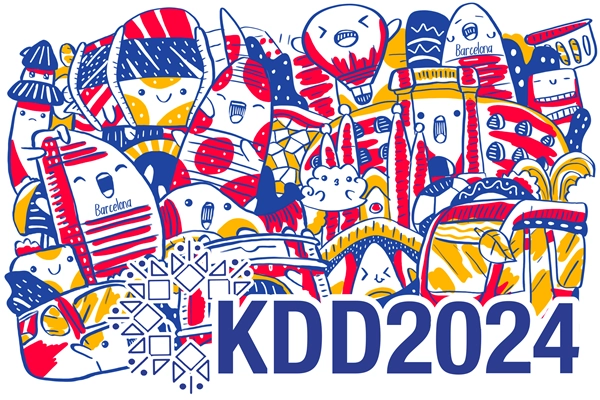
20.08.2024
MCML researchers with two papers at KDD 2024
30th ACM SIGKDD International Conference on Knowledge Discovery and Data (KDD 2024). Barcelona, Spain, 25.08.2024 - 29.08.2024


